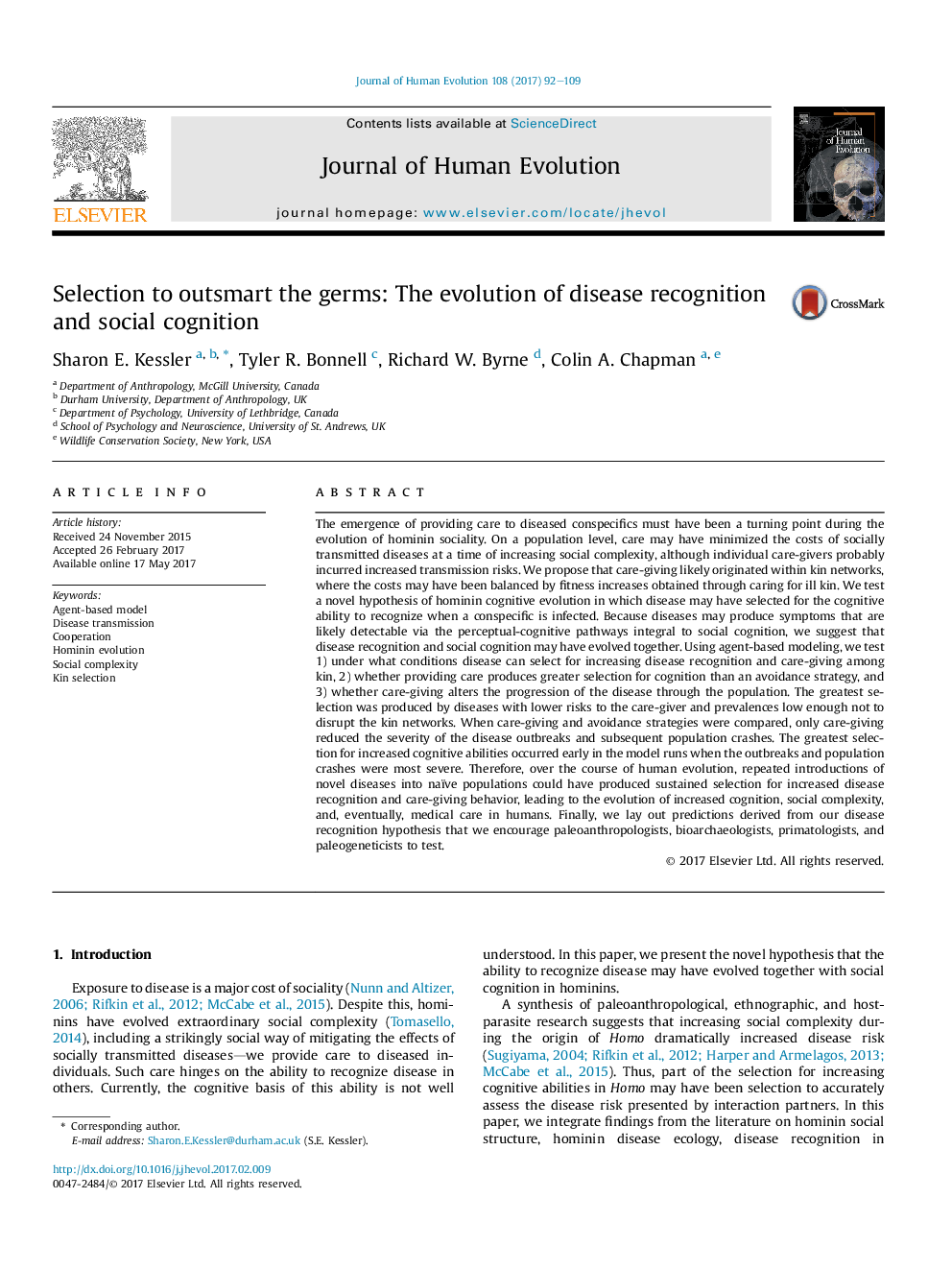| کد مقاله | کد نشریه | سال انتشار | مقاله انگلیسی | نسخه تمام متن |
|---|---|---|---|---|
| 5766828 | 1628141 | 2017 | 18 صفحه PDF | دانلود رایگان |
The emergence of providing care to diseased conspecifics must have been a turning point during the evolution of hominin sociality. On a population level, care may have minimized the costs of socially transmitted diseases at a time of increasing social complexity, although individual care-givers probably incurred increased transmission risks. We propose that care-giving likely originated within kin networks, where the costs may have been balanced by fitness increases obtained through caring for ill kin. We test a novel hypothesis of hominin cognitive evolution in which disease may have selected for the cognitive ability to recognize when a conspecific is infected. Because diseases may produce symptoms that are likely detectable via the perceptual-cognitive pathways integral to social cognition, we suggest that disease recognition and social cognition may have evolved together. Using agent-based modeling, we test 1) under what conditions disease can select for increasing disease recognition and care-giving among kin, 2) whether providing care produces greater selection for cognition than an avoidance strategy, and 3) whether care-giving alters the progression of the disease through the population. The greatest selection was produced by diseases with lower risks to the care-giver and prevalences low enough not to disrupt the kin networks. When care-giving and avoidance strategies were compared, only care-giving reduced the severity of the disease outbreaks and subsequent population crashes. The greatest selection for increased cognitive abilities occurred early in the model runs when the outbreaks and population crashes were most severe. Therefore, over the course of human evolution, repeated introductions of novel diseases into naïve populations could have produced sustained selection for increased disease recognition and care-giving behavior, leading to the evolution of increased cognition, social complexity, and, eventually, medical care in humans. Finally, we lay out predictions derived from our disease recognition hypothesis that we encourage paleoanthropologists, bioarchaeologists, primatologists, and paleogeneticists to test.
Journal: Journal of Human Evolution - Volume 108, July 2017, Pages 92-109
